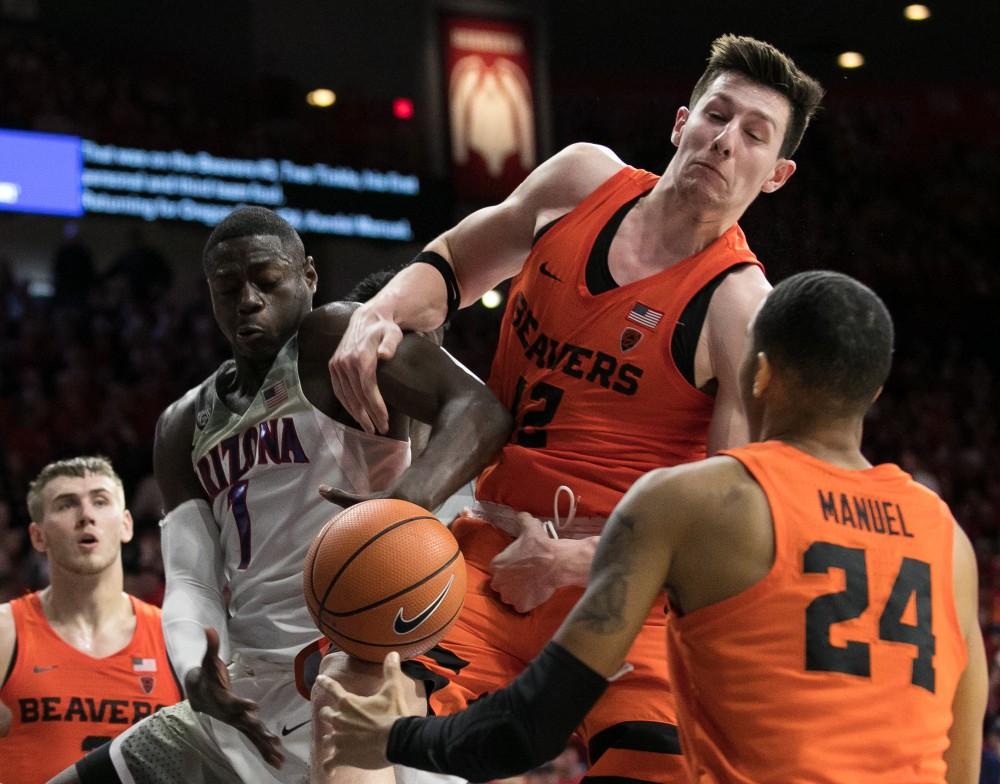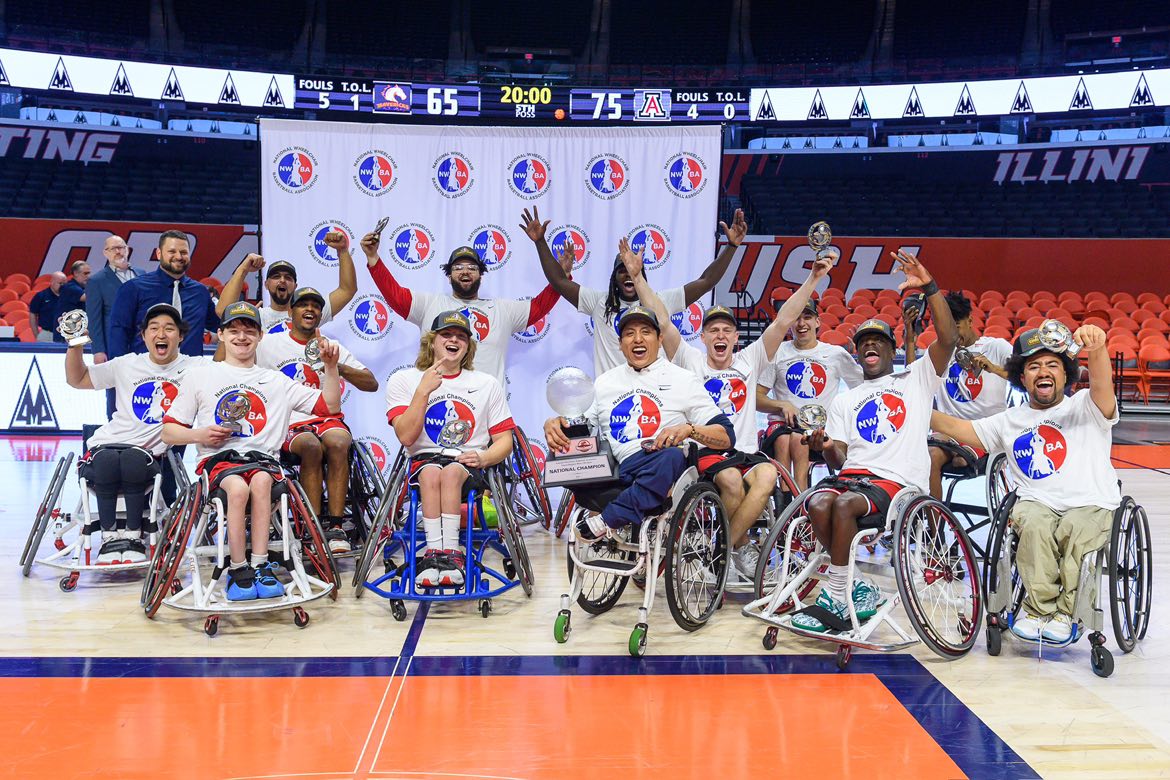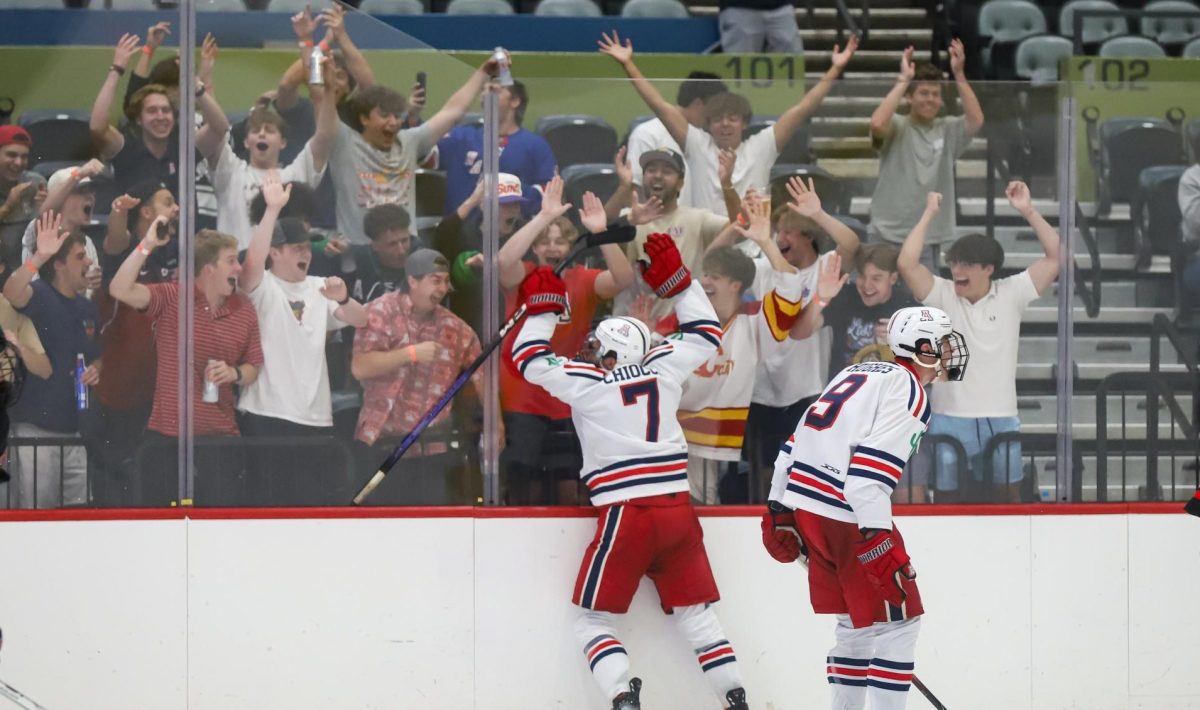It’s been well documented how much the Arizona men’s basketball team has struggled against zone defenses in the past, and Thursday night against Oregon State was no different. You don’t have to go very far back to find a point in time where the lack of a zone offense hurt the Wildcats; simply look at last year’s NCAA Tournament loss to Xavier.
This year has been different, in most part because of the addition of Deandre Ayton. As mid-range jumper with a versatile skill set that makes him near unguardable in situations, he adds a different dimension to Arizona — one that Lauri Markkanen didn’t. Thursday night’s matchup against the Oregon State Beavers highlighted different issues outside of Ayton’s control.
The Wildcats under head coach Sean Miller are meant to have a singular defensive focus — that is his M.O. Miller would much rather win a 50-45 slugfest than a 90-85 shootout, that is just his style. The game against Oregon State should have told him otherwise.
While defense needs to be a priority, the offense shouldn’t play into the opposition’s hands as it did against the Beavers. OSU’s matchup zone caused the Wildcats to slow down, playing to their own strengths. The Beavers don’t have the athletes Arizona has, so slowing down the tempo and playing a very methodical style is what they want. So when the score was 22-21 at the half, it was right up OSU’s alley.

“That’s what zones do, zones slow teams down and you saw Colorado do it and that’s what we play,” Oregon State head coach Wayne Tinkle said. “They did get some turnovers and get out in transition, otherwise if they didn’t get those three or four baskets, they’re setting everything in basketball back like we do, scoring in the 40’s and 50’s.”
Tinkle alluded to the fact that Arizona was tough in transition; there lies the major issue with Arizona. It’s not the zone offense itself, at least not with Ayton in tow. It is the lack of offensive efficiency, especially when Arizona spends half the shot clock passing the ball in their typical dribble hand-off series at the top of the key. Time that could be better spent attacking the gaps and pulling in defenders to look for open kick-outs.
“Certainly you have to have more than one way of playing against a zone, you know. Again, we weren’t perfect, but I thought in the second half we did some really good things,” Miller said.
Despite initial struggles against the Beavers, Arizona did score 41 second-half points and controlled the game for the last ten minutes of the contest. The Wildcats had said working against the zone was a point of emphasis going into the summer last season. For the most part, they haven’t looked nearly as unprepared as they had in years past against their kryptonite — though at times against OSU they did look downright awful.
“We are starting to see the zone a lot more than we had been at the beginning of the year, so now we are just getting back into the mix of things and getting better every game,” guard Rawle Alkins said.
Follow Saul Bookman on Twitter















